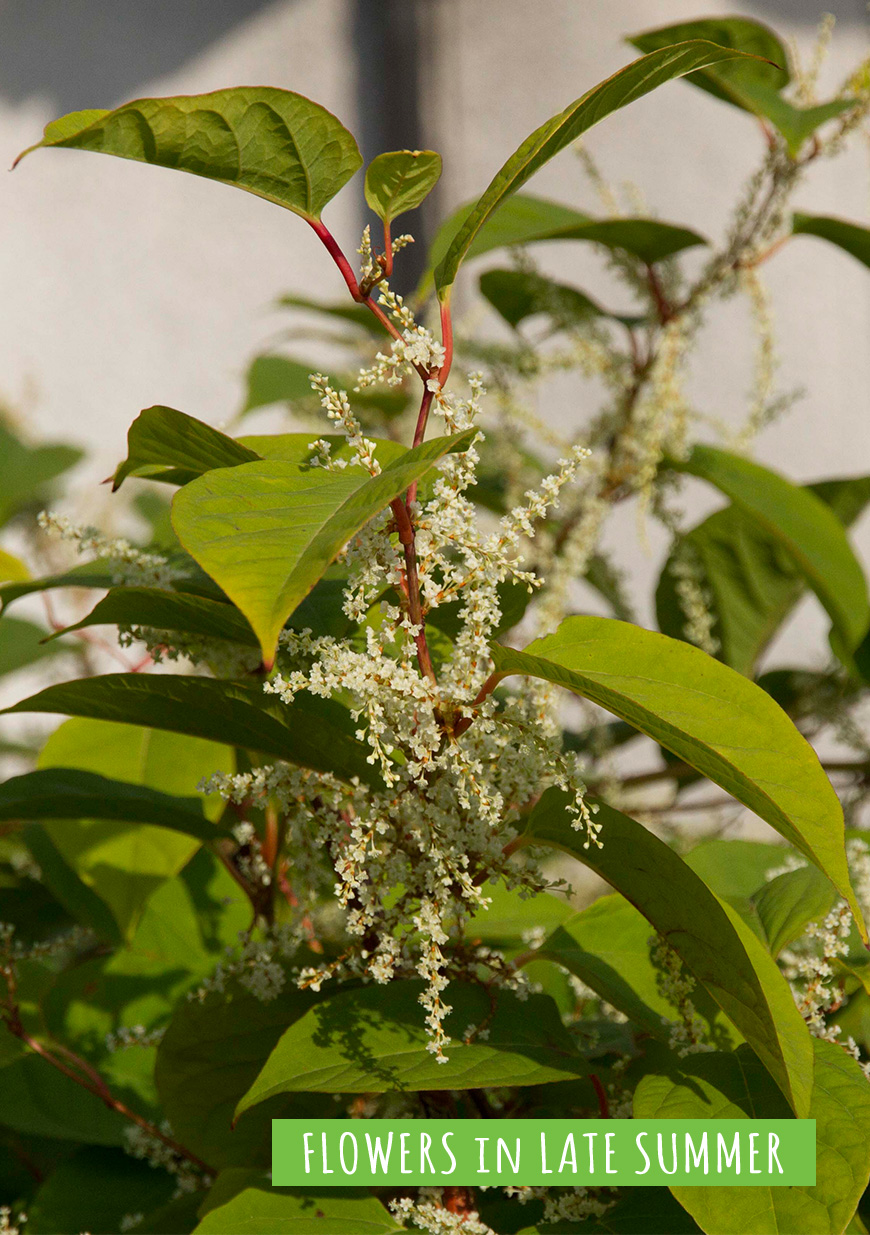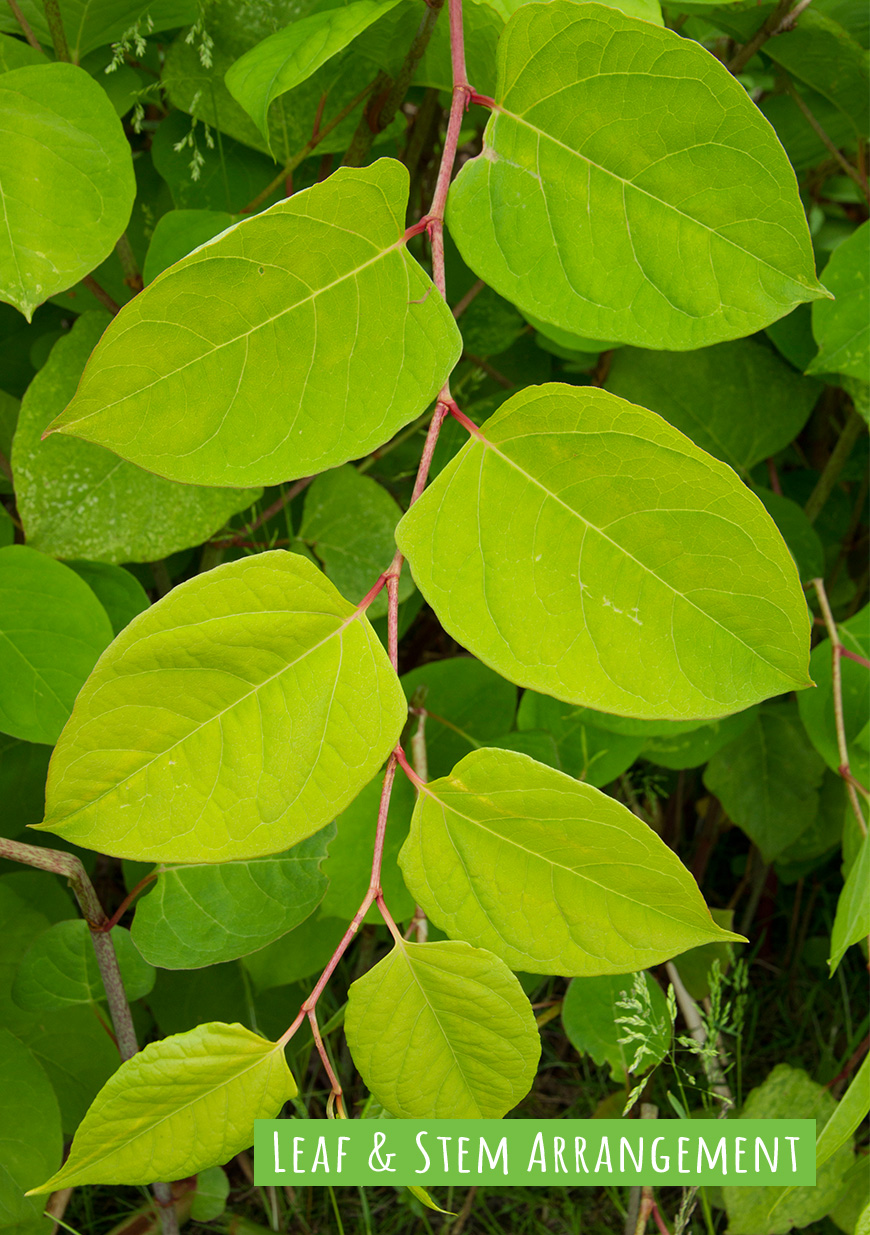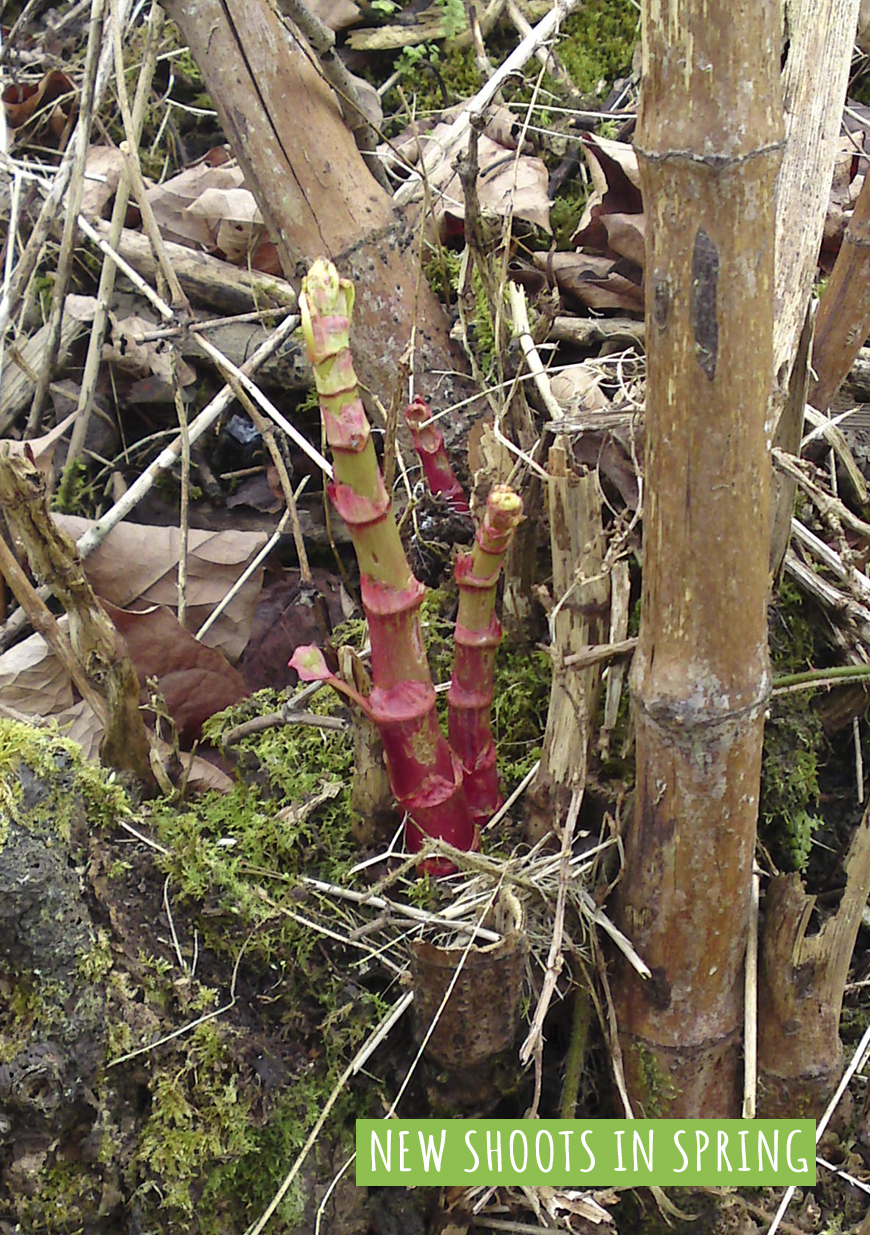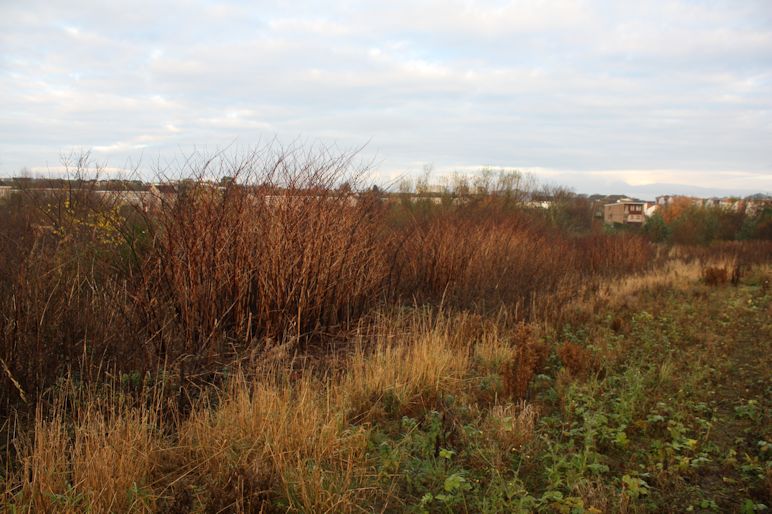Can it damage buildings?
The plant has a reputation for being able to damage buildings, driveways, and built structures. This is often overstated and could be considered to be scaremongering. Japanese knotweed will only adversely affect buildings and features that have not been built/designed properly.
Nevertheless, the presence of the species on your, or neighbouring, property cannot be ignored. The RICS and mortgage lenders have become increasingly aware of the unjustified reputation of Japanese knotweed as a threat to property. So, if you decide to move house the presence/absence of Japanese knotweed will be taken into account; it will be itemised on home reports, and if present may be an obstacle to the sale of a property. Some mortgage lenders may not lend on the purchase and those that do will only lend once an approved contractor has been appointed to eradicate the plants and provide an insurance-backed guarantee.
Japanese knotweed and the law
UK legislation (the Wildlife and Countryside Act 1981 as amended and the Natural Environment (Scotland) Act 2011) makes it an offence to cause Japanese knotweed to grow in the wild and requires that landowners ensure that any plants growing on their land do not spread onto neighbouring properties. In Scotland, local authorities can order landowners to deal with the species on their land, if neighbours request it. In addition, the plants and soil containing Japanese knotweed rhizome are classed as Controlled Waste and must be disposed of at licensed landfill sites.
How do you recognise Japanese Knotweed?
Japanese knotweed stems are hollow and arch out from the base, supporting large numbers of individual, alternating, heart/shield-shaped leaves. In August to September the stems also produce racemes (clusters) of creamy flowers near their tips. The stems are green with red highlighting around joints and leaf bases as well as numerous small red spots. The plants attain their maximum size by September. Once they have flowered, they die back leaving a stand of rust-coloured dead stems with characteristic zigzag ends. These often persist into the new year and new buds appear at the base, developing into stems that resemble asparagus.
 Creamy clusters of Summer flowers
Creamy clusters of Summer flowers Individual, alternating heart-shaped leavesJapanese knotweed is often confused with bindweed, dogwood, rosebay willow herb and Himalayan honeysuckle.
Individual, alternating heart-shaped leavesJapanese knotweed is often confused with bindweed, dogwood, rosebay willow herb and Himalayan honeysuckle.
What to do if you think you have found it
Don’t worry! This plant has an unjustifiably bad reputation. A professional contractor, who specialises in this area, will be able to help.
Ideally, the contractor should be a member of INNSA (the Invasive Non-Native Specialists Association) and should be BASIS registered. Failing that, they should be Japanese knotweed trained members of the PCA (Property Care Association).
A good company should accept photographs from you to confirm identification, but may insist on an inspection for which they may charge. A reputable contractor would wish to see the property before committing to a cost. At this stage, the company should present you with a range of options, costs and timescales. As a rule of thumb, the quicker you want it done the more it will cost!


Treatment options
The quickest option for treatment is physical removal and disposal to landfill. This will create a hole up to 2m deep to a radius of possibly 2m from the infestation depending on its maturity and vigour. Do not be persuaded by someone who suggests they can dig it out to a depth 300mm and be confident that they have dealt with it. If you appoint anyone to dig it out, ask to see the landfill tickets after disposal-remember it is your responsibility to make sure everything has been disposed of legally.
The alternative commercial approach is to treat the infestation with herbicide, with the ultimate aim of eradication. The contractor should be BASIS registered and should apply a systemic translocated herbicide to the visible parts of the plants, which then passes through the plant into the rhizome. It is essential the rhizome is killed to achieve eradication. This treatment should take no more than three years and should only involve one application a year.
Beware the contractor who suggests three or four treatments a year: this is likely to cost much more and take longer to eradicate the infestation than an annual treatment at the correct time of year. No INNSA contractor should recommend a three/four-times-a-year treatment regime.
There are alternative chemical treatments to spraying: leaf wiping and stem injection. These are more focussed than spraying and present less likelihood of damage to other garden plants, but are very labour intensive and potentially more expensive.
Further reading
Beware Wikipedia, there are numerous errors and false claims in this text.
The Wildlife & Countryside Act 1981 as amended
The Wildlife & Natural Environment (Scotland) Act 2011
https://www.labss.org/news/how-do-you-deal-japanese-knotweed-scotland
http://www.nonnativespecies.org/factsheet/factsheet.cfm?speciesId=1495
